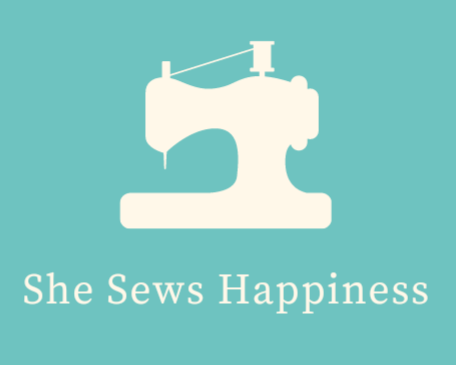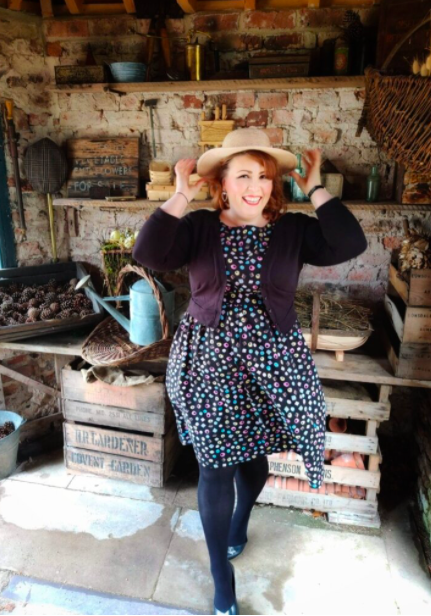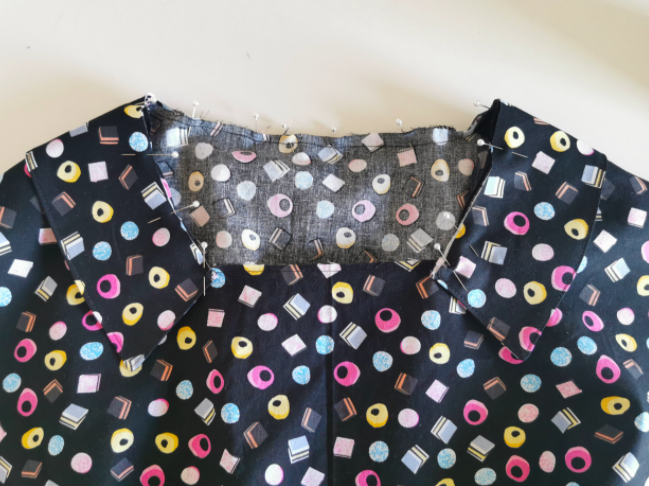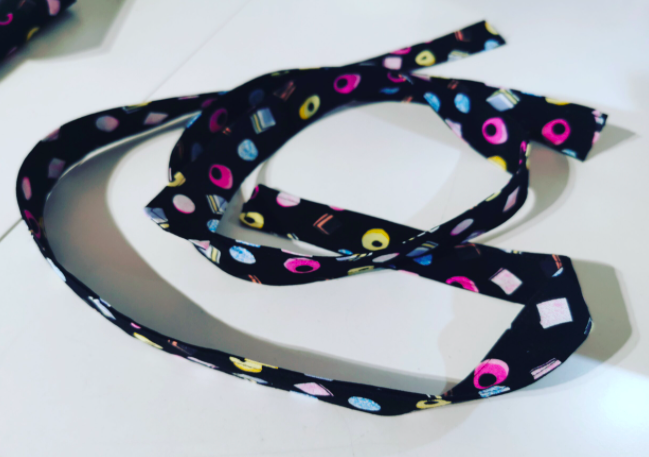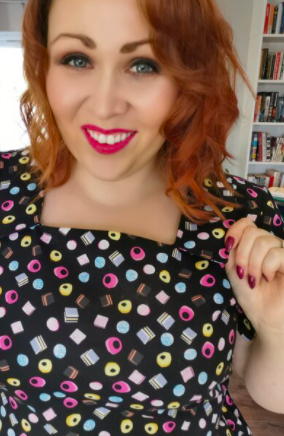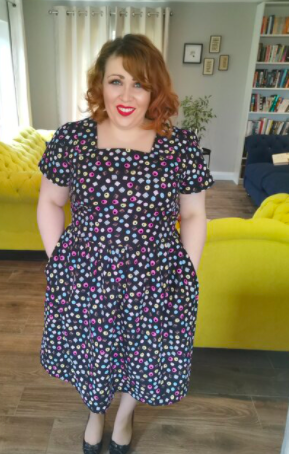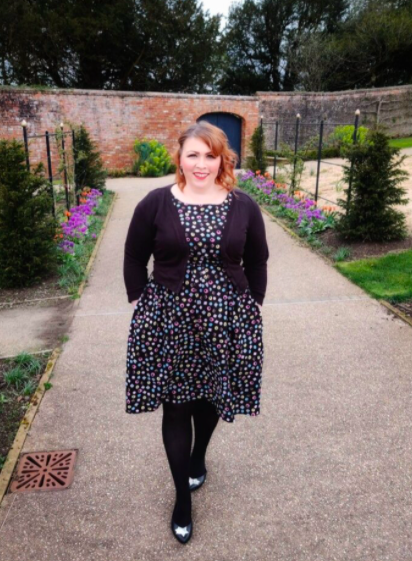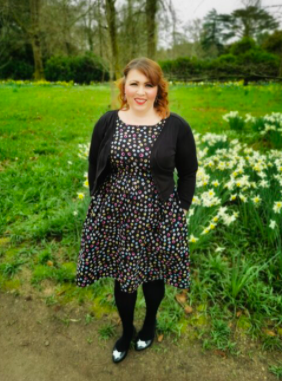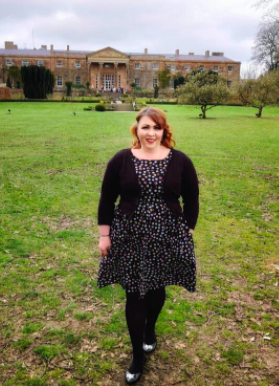I don’t know about you, but one of my favourite things about sewing is the opportunity for self-expression. What we wear says a lot about who we are. The potential for this self-expression is heightened when we make our own clothes; we have unlimited choice of patterns, fabrics, colours and notions. As a bonus of this ability to express myself through sewing my own clothes, I personally have found sewing to be a way of cultivating body acceptance; as someone just over the five foot mark, with curves I used to hate, sewing has made me accepting of my shape because I’ve learned how to make the basic adjustments needed to suit my figure. Before I started on my sewing journey, there were only a few shops that suited my style and my tendency to prefer clothing reminiscent of earlier fashion eras.
I’ve never really followed fashion trends; for me, fast fashion was always something I resented because it was so commercialised. Everyone looked the same. Everyone dressed the same. Most people wear mass-produced clothing; after all, it’s easily available. Others choose to build an identity for themselves by choosing clothing outside the mainstream. I always wanted my clothes to have more individuality – and, looking back, I always did. I never wore trousers; I’ve always been the girl in the dress (and that will never change). From my early teenage years, I’d have vamped up my clothes, hand stitching appliques or adding trims, even changing buttons (I have always loved quirky, vintage buttons). In my early to mid-20’s, I lost track of how many times I heard friends talking about how they didn’t want to be that person showing up at the wedding in the same Coast dress as somebody else – and, yet, inevitably, they always did. I would scour vintage shops and go online to find interesting one-off pieces rather than go for whatever was in season – and accessories really were my friends (statement jewellery pieces, quirky bags, hair accessories). Reproductive vintage was also a staple of mine which marked me out from most people in my social circle. Now that I sew, however, it’s much less effort to find something different.
When I choose fabric, I am able to project who I am and wear something a little bit different, a little more me. So, when I saw this liquorice allsorts cotton on the website, I was automatically drawn to it. It’s fun and quirky and, to get to the bottom line, I really like these sweets (especially the little pink and blue aniseed ones – and the coconut ones).

Jennifer Lauren Handmade – Asteria Dress
I thought I would try a different look for me – some of the most popular patterns out there include Tilly and the Buttons’ Indigo and The Friday Pattern’s Company Wilder Gown. While these look beautiful on many people, they just do nothing for me. My body shape needs more of a fitted garment. So, when I saw the Asteria dress with its 60s mod detailing, I thought it might be a good compromise, being semi-fitted.
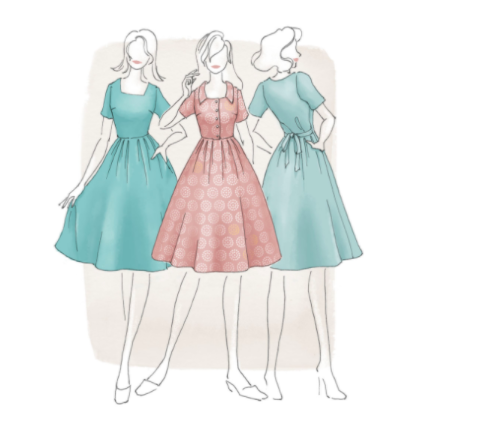
The pattern itself is beautiful; featuring short sleeves, it is fitted at the bust with ties at the natural waist. It has a square neckline (which I discovered I loved with the release of By Hand London’s Tamzin dress) with the option of a collar – I love a collar, albeit nothing too big – the large collar patterns that everyone except me seems to love reminds me of a picture of me taken in 1987 wearing a black velvet dress (now, I don’t object to dress per se) featuring an oversized white frilly collar which always has and always will give me a Puritanical vibe – ‘Puritan’ is not really a style I’m going for. It was bad enough that this crime was enforced upon me in my childhood. Look at the grimace on little me. Three-year-old Mary-Ellen knew this wasn’t the look she was going for…

The Asteria comes with an option of a button-down front but I chose the version that is cut on the fold, mistakenly thinking it would be easier to fit my bust. I was wrong – it took 3 toiles to get the girls comfortable in this bodice! Given the style of the dress, though, this was really the only fitting to work on. The only other thing you might want to check is the bodice length.
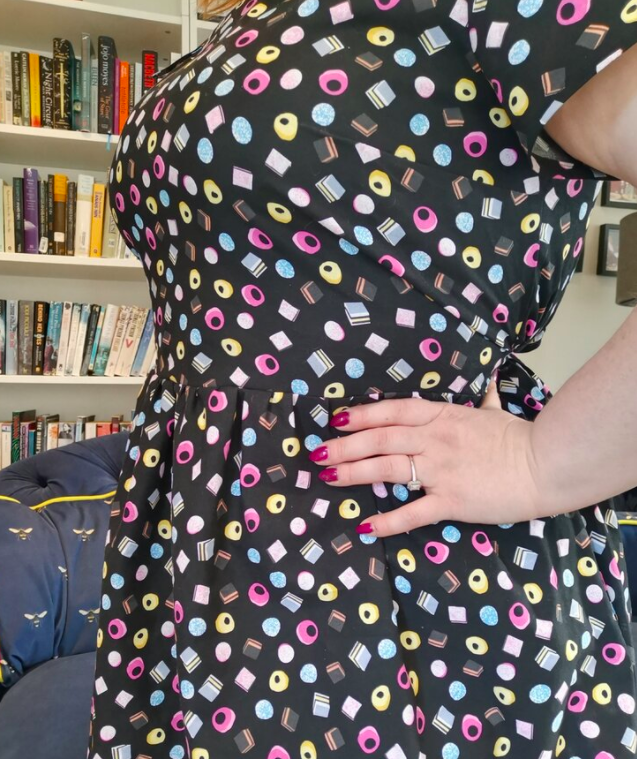
The dress itself sews up so easily; it was finished within a couple of hours. The collar was particularly easy even for someone who doesn’t make a lot of collared garments. It was the neckline and collar detail that drew me to this dress originally and it really does elevate what is a very basic bodice; there’s only bust darts to shape the bodice. The dress relies on those ties to give shape (anyone else love turning out ties?).
Now, as with most quilting cottons, the width of my fabric was 44” and the box pleats of the skirt required a wider fabric. Since the dress is only semi-fitted and the waist ties can be used to control the fit, I decided to risk a gathered skirt, tentatively concerned that it might give more volume than desired.
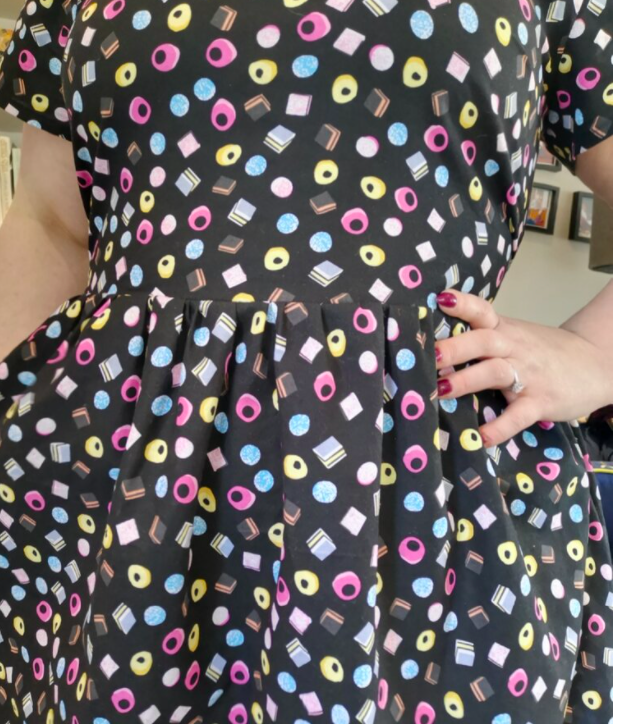
Saying that, I love the finished result – I’ve finally found a less ‘fitted’ pattern that doesn’t work against my body.
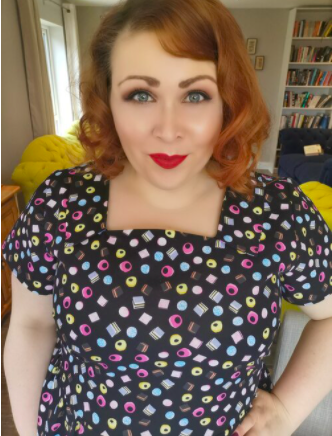
However, while I do love this make and think it will be a perfect everyday dress that will actually carry me through the seasons, there was still that part of me which regretted not making a more fitted garment with this fun fabric…
Here’s the thing – I *could* have another style in this print so I decided I would. I ordered more of the fabric and pulled out one of my tried and tested patterns.
Sew Over It – Marguerite Dress
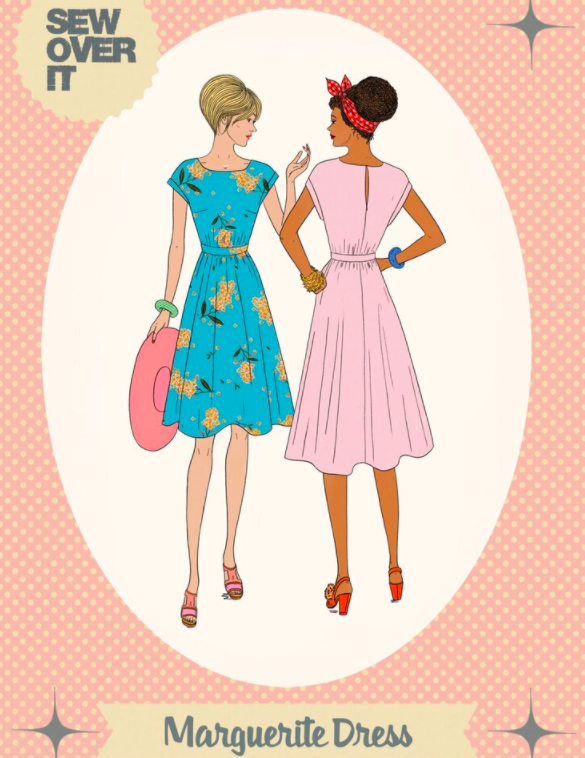
This is a pattern that just works for my body – it requires zero modifications, for a start, which kind of makes it a unicorn for me. The dolman sleeves make the bodice a very forgiving fit. With the fitted waistband, the sloping shoulders really help to balance out my shape while accentuating my curves at the same time.
Generally, the Sew Over It line of patterns are a staple in my wardrobe as many of them are reminiscent of vintage styles. When it comes to Marguerite, I’ve kind of flaunted the rules of intention – the pattern has been designed with fluid fabrics in mind, like rayon, for instance. For beginners, a cotton lawn or chambray would be perfect choices. With heavier fabrics like this quilting cotton, it is a little more effort with the hand-stitching that is required for the cuffs and the waistband but that happens to be one of my favourite things to do so I don’t mind it at all.
The shape of this dress really is in the details; apart from the bust darts, the rest of the shaping work is done by gathers which are held by the waistband.
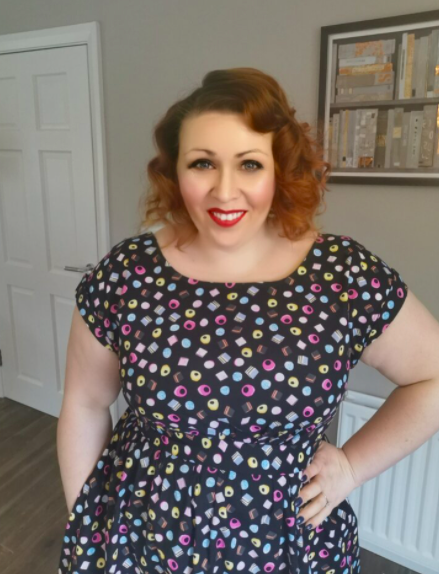
Because there are a few hand stitching tasks in the making of this pattern, it doesn’t come together as quickly as the Asteria but it’s worth the work.
Like the Jennifer Lauren Asteria dress, this will get a lot of wear. I think that’s one of the real attractions of cotton for me; aside from the fun prints that you can get, especially with quilting cottons, it’s a fabric that can be worn all year round. Saying that, this is intended to be a birthday dress – a day when sweet treats of any kind are mandatory!
